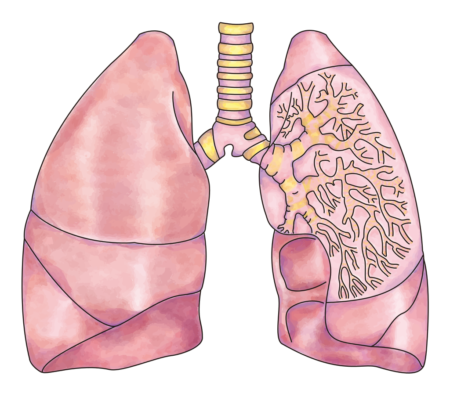5 amazing facts about human respiration
by How It Works Team · 12/04/2021

The primary organs used for respiration in humans are the lungs. Humans have two lungs, with the left lung being divided into two lobes and the right into three. The lungs have between 300–500 million alveoli, which is where gas exchange occurs.
Respiration of oxygen breaks into four main stages: ventilation, pulmonary gas exchange, gas transportation and peripheral gas exchange. Each stage is crucial in getting oxygen to the body’s tissue, and removing carbon dioxide.
Ventilation and gas transportation need energy to occur, as the diaphragm and the heart are used to facilitate these actions whereas gas exchanging is passive. As air is drawn into the lungs at a rate of between 10- 20 breaths per minute while resting, through either your mouth or nose by diaphragm contraction, and travels through the pharynx, then the larynx, down the trachea, and into one of the two main bronchial tubes. Mucus and cilia keep the lungs clean by catching dirt particles and sweeping them up the trachea.
When air reaches the lungs, oxygen is diffused into the bloodstream through the alveoli and carbon dioxide is diffused from the blood into the lungs to be exhaled. Diffusion of gases occurs because of differing pressures in the lungs and blood. This is also the same when oxygen diffuses into tissue around the body.
When blood has been oxygenated by the lungs, it is transferred around the body to where it is most needed in the bloodstream. If the body is exercising, breathing rate increases and consequently so does heart rate to ensure that oxygen reaches tissues that need it. Oxygen is then used to break down glucose to provide energy for the body. This happens in the mitochondria of cells. Carbon dioxide is one of the waste products of this, which is why we get a build up of this gas in our body that needs to be transported back into the lungs to be exhaled.
The body can also respire anaerobically, but this produces far less energy and instead of producing CO2 as a byproduct, lactic acid is produced. The body then takes a time to break this down after exertion has finished as the body has a so-called oxygen debt.
Top 5 Facts
1) Lung capacity varies hugely
Dependant on sex and body size, alongside external factors such as altitude, lung capacity ranges between 4,000 and 6,000cm3.
2) The right lung is bigger
The left lung is slightly smaller than the right because the left lung has to make room for the heart to fit in.
3) We have excess lung capacity
On average, we only use about one-eighth of the capacity of our lungs for each breath so we have a large reserve volume.
4) Alveoli have massive surface area
One person’s entire alveoli laid out would have the surface area of about 70cm2 – roughly half a tennis court!
5) We breathe 11,000 litres of air per day
On average, one individual will breathe in 11,000 litres of air a day. If we exercise heavily during that day, this will increase further.
For more science and technology articles, pick up the latest copy of How It Works from all good retailers or from our website now. If you have a tablet or smartphone, you can also download the digital version onto your iOS or Android device. To make sure you never miss an issue of How It Works magazine, subscribe today!





